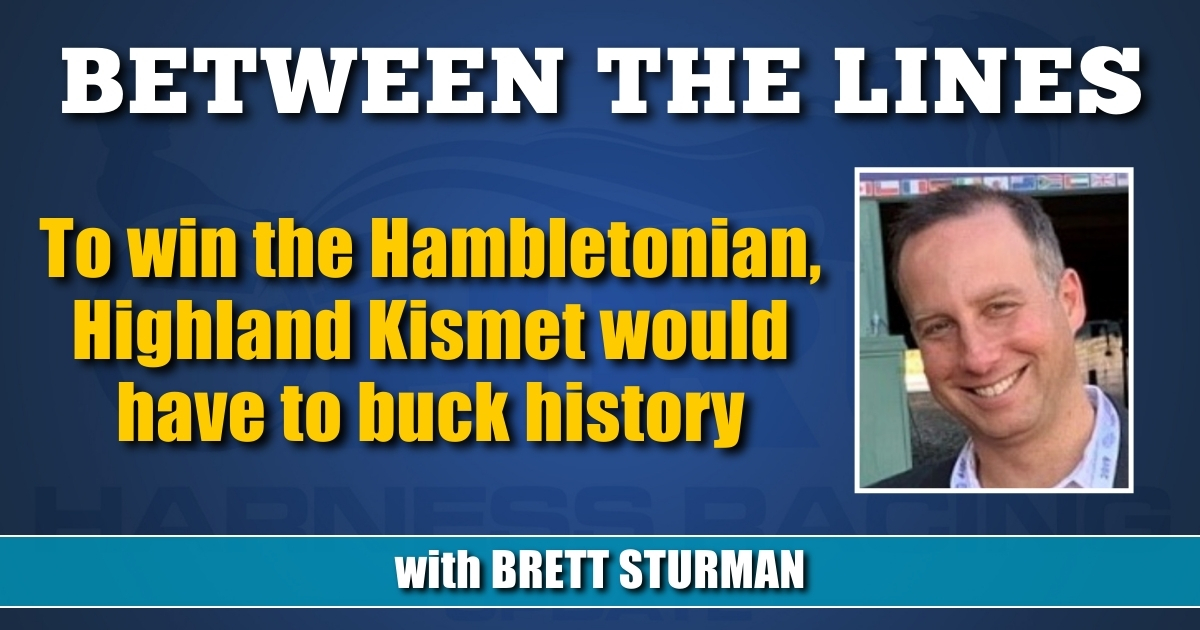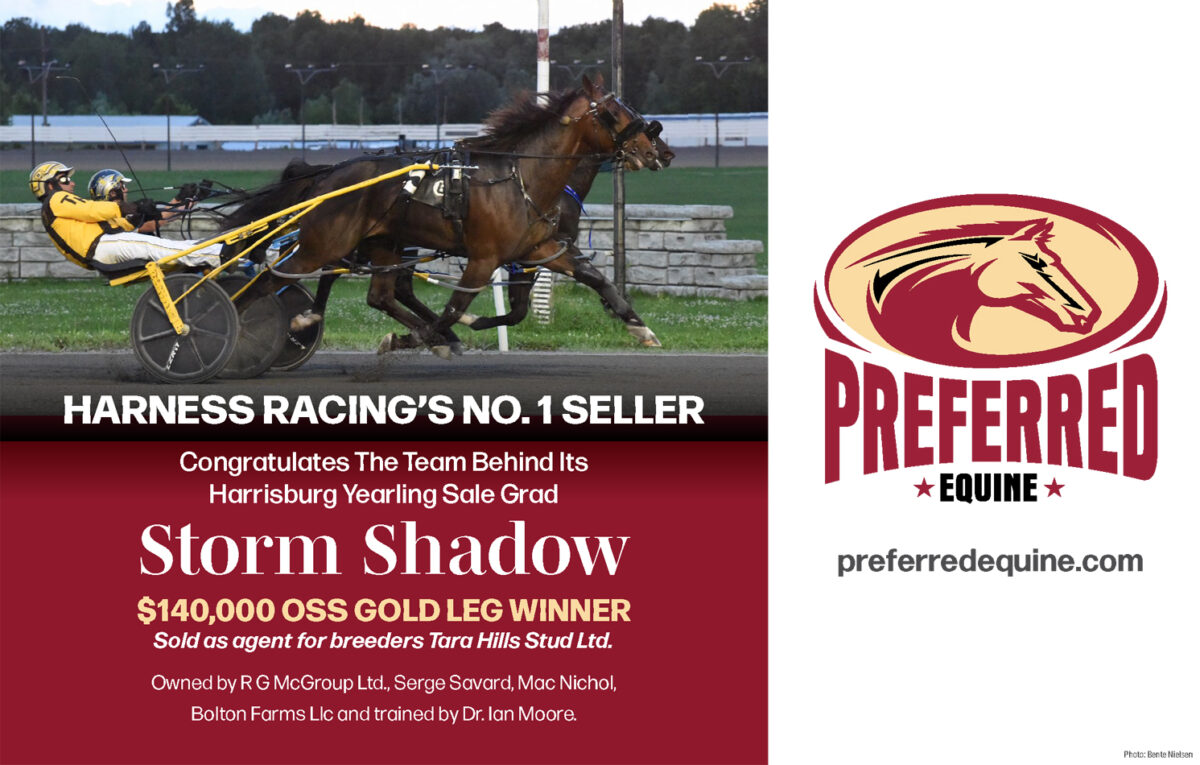

To win the Hambletonian, Highland Kismet would have to buck history
by Brett Sturman
Vaulted into the top tier of Hambletonian contenders in the blink of an eye and documented in Harness Racing Update by Melissa Keith on Friday, Highland Kismet has sights set on the first Saturday in August at The Meadowlands.
The divisional leader and potential generational talent Karl will still represent the largest roadblock to Highland Kismet winning that race, but there is a notable amount of history to be overcome as well: No horse has won the Hambletonian as an unraced 2-year-old since 1995.
No one since Tagliabue 29 years ago has won a Hambletonian having not raced prior to his 3-year-old season, and the feat has been attempted only seldom since that time. Interestingly, in the years immediately before Tagliabue’s win which included a same-day elimination win, Park Avenue Joe dead-heated for the Hambletonian win in 1989 having not raced at 2, and five years before that Historic Freight accomplished the same in 1984. It’s possible that the last time it occurred before that year was back in 1956 with a horse named The Intruder.
While no horse this century has managed to overcome not racing as a freshman to win the Hambletonian, there have been others that have at least made it to the final. Based on what I could find and there obviously could be others, that unofficial list would include Holy Guacamole (2003), Too Salty (2007), Knows Nothing, who was also an elimination winner in 2012, Pilot Discretion (2019), and most recently with Really Fast in 2021.
If Highland Kismet were to win the Hambletonian six weeks from now, one thing he would almost certainly accomplish would be the latest starting horse to ever win the race. His first racetrack appearance in a qualifier didn’t come until April 26 and his first pari-mutuel race didn’t happen until May 2. It doesn’t seem possible any horse has won the Hambletonian that didn’t debut until May of their 3-year-old season.
Tagliabue may have been the closest to Highland Kismet in terms of getting started. He first qualified on March 31 of his 3-year-old season and then debuted on April 18. In another similarity, he was scratched sick out of his next race and wasn’t seen again in a pari-mutuel race until June 21. Highland Kismet too, following his first race, was scratched sick and then came back two weeks later to be runner-up in his next out race, just as Tagliabue.
In the most recent comparison, Really Fast began racing earlier. Having first attempted to qualify in February of 2021, he made his first official start on April 2, one full month before Highland Kismet made his debut. Really Fast would go on to be second in his Hambletonian elimination to eventual Hambletonian winner that year, Captain Corey.
So, what to make of all this? I guess I’m surprised that there aren’t more talented sophomore trotters with late starts. Generally, it seems that the best 3-year-olds are the ones that raced at 2. Even if they weren’t stars at 2, having that early foundation is a benefit that those who didn’t race won’t have.
In thoroughbred racing, there was a similar phenomenon with regards to the Kentucky Derby. Prior to 2018, no unraced 2-year-old horse had won the race since the year 1882. But there are key differences between the breeds and the races.
The first Saturday in May, the Kentucky Derby, is three full months before the Hambletonian. With that, it would be far more difficult for a horse who never raced at 2 to be fully primed to beat the highest level of competition in May, whereas with the Hambletonian there are a few more critical months of time to work with. One would think that extra time would produce more unraced contenders.
The other part has to do with the durability of the breed. While the thoroughbreds have become ever more fragile of a breed and the careers of many of the top horses amount to total career races in the single digits, standardbreds remain as durable as ever. The top horses still race week in and week out, racing at least a couple dozen times a year.
With the breed similar to where it was decades ago, why were there three different unraced 2-year-olds to win the Hambletonian in an 11-year span in the 1980-90’s, but no one since? Who knows. Maybe that period of time was just an aberration.
If Highland Kismet were to win the Hambletonian, it wouldn’t hurt for luck to be on his side as well. When Tagliabue won in 1995, a footnote to that year’s race was the breaking stride of the 1-9 favorite in their elimination, the freakishly-talented filly CR Kay Suzie. If she didn’t break stride and fail to advance, who knows how that race’s final would have turned out.
That’s not to say I’m wishing the same fate on Karl and driver Gingras, who has never been better positioned to win this race; I’m not. I don’t want misfortune to happen, and please don’t come back to this column if it does. It is to say though, that talent as well as an element of fate play roles for horses to win the Hambletonian starting this late.















